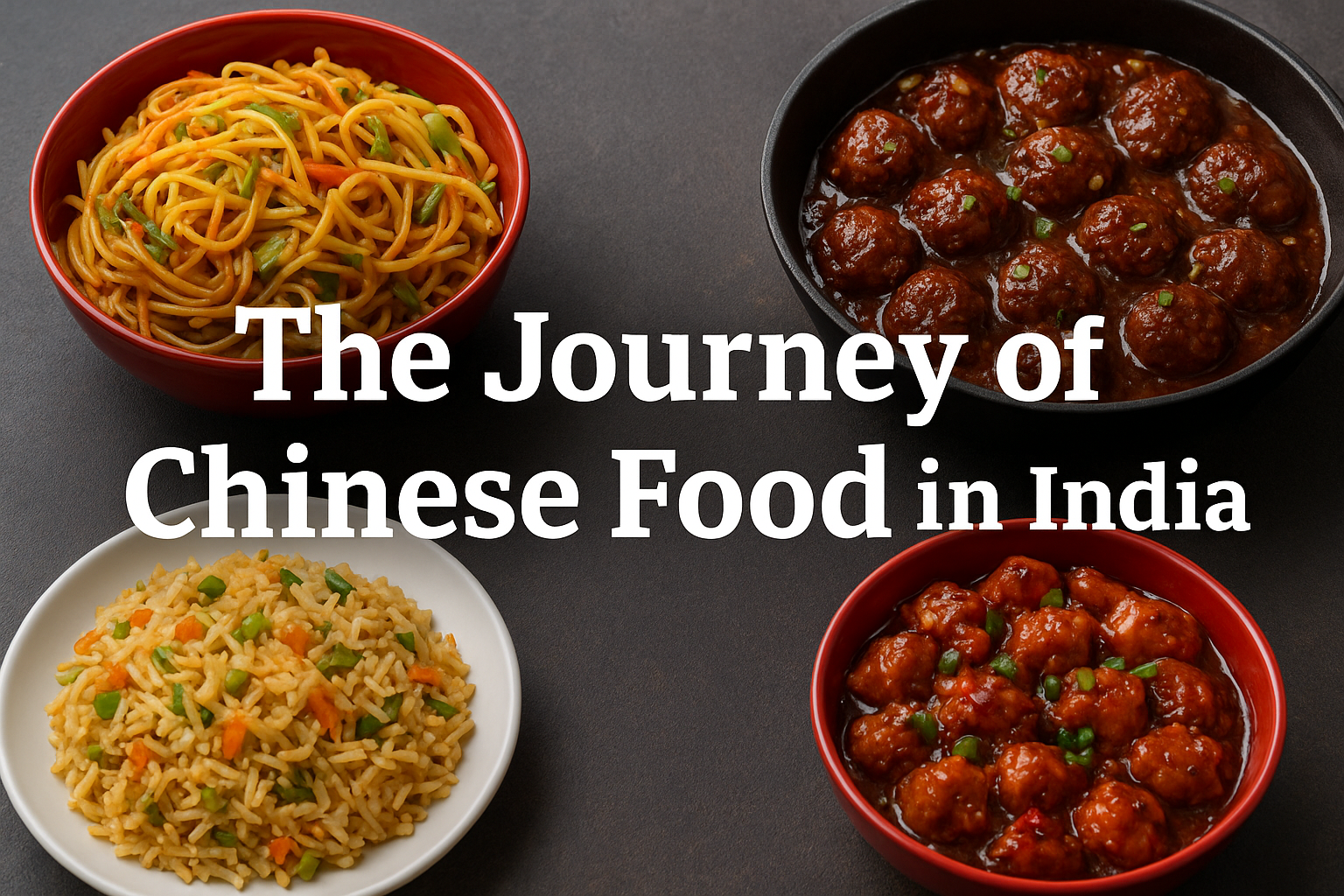
Food has always been one of the strongest bridges between cultures, and the story of Chinese food in India proves it beautifully. What began as a small culinary experiment more than a century ago has today become one of the most loved food traditions across the country. From roadside stalls selling noodles to fine dining restaurants offering elaborate Chinese menus, the journey has been long and fascinating.
The Beginning in Kolkata
The first chapter of Chinese food in India started in Kolkata. In the late 18th and early 19th century, Chinese traders and workers came to the city for work opportunities. Many of them settled in an area that later came to be known as Chinatown. They introduced their cooking methods, which included stir frying, steaming, and using sauces that were new to the Indian palate.
One of the earliest dishes that gained popularity was the humble noodle. The Indian version soon took its own course, becoming spicier and more colorful than the original. By the mid-20th century, Chinese restaurants in Kolkata were attracting crowds from all walks of life. Families enjoyed weekends at popular joints, and the taste slowly spread to other cities.
How Chinese Became “Indian Chinese”
Unlike many other foreign cuisines, Chinese food in India did not remain limited to elite restaurants. It reached the streets, small towns, and even school canteens. The reason was simple. Indians love bold flavors, and Chinese cooking adapted itself to that demand. Soy sauce met green chilies, garlic was used in large amounts, and vinegar became as common as salt.
This gave rise to what we now call “Indian Chinese.” It is not exactly Chinese food, yet it carries the name and essence of it. Dishes like chili chicken, manchurian, Hakka noodles, and Schezwan fried rice are creations of Indian kitchens, but they sound Chinese and carry Chinese-style cooking techniques. This blending of two cultures gave Indian Chinese food a unique identity.
Spread Across the Country
By the 1980s and 1990s, Chinese food had traveled far beyond Kolkata. In Mumbai, Delhi, Chennai, and Bengaluru, Chinese restaurants were a common sight. The real revolution, however, came when street food vendors adopted it. Cart owners selling chowmein and momos became part of the urban landscape.
Even small towns and villages are now full of stalls selling noodles, soups, and fried rice. Many families across India have made Chinese food part of their weekly menu, cooking it at home with ready-made sauces easily available in the market. The journey from a foreign taste to a household favorite has been remarkable.
Influence on Everyday Eating
One interesting aspect of this journey is how Chinese food has blended into Indian celebrations. Birthdays often feature plates of noodles and chili paneer. Office parties include fried rice and spring rolls. School canteens are incomplete without momos or fried noodles with ketchup.
Another sign of this influence is how Indian Chinese dishes have become part of wedding buffets and festival menus. It is hard to find a big gathering today without a counter serving Hakka noodles or Schezwan dishes.
A Fresh Perspective
If we look closely, the popularity of Chinese food in India is not only about taste. It reflects how open India has always been to absorbing and reshaping cultural influences. The dishes carry Chinese names, use Chinese-style sauces, and yet the flavor is Indian at its core.
This blending is so natural that many young people believe dishes like Manchurian or Schezwan rice are authentic Chinese when in fact they are not served in China at all. It shows how food evolves when two cultures meet. The Indian version respects the origin but also makes space for local preferences.
Today and Tomorrow
Today, Chinese food in India is everywhere. From luxury restaurants to roadside stalls, from five-star hotels to school tiffin boxes, it has become part of everyday life. Food delivery apps report Chinese as one of the top-ordered cuisines. Even global chains adjust their menus in India to include dishes with Chinese flavors.
The journey of Chinese food in India tells us that food is never fixed. It travels, adapts, and grows. Just like people, recipes too cross borders and find new homes. What began with a small community in Kolkata has now become a national taste. In every spoonful of noodles or every bite of chili chicken, there is a story of connection, adaptation, and love for flavor.





















